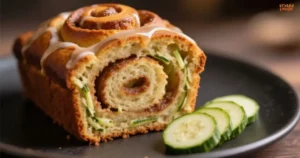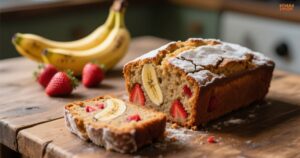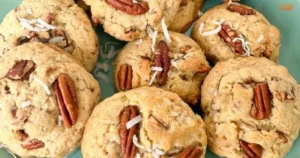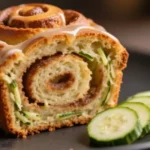There’s something magical about the aroma of freshly baked cookies wafting through the kitchen. I still remember the first time I baked chocolate chip cookies. I was a kid, and I felt like a scientist in a lab, mixing ingredients and waiting for the magic to happen. When those cookies came out of the oven, warm and gooey, I knew I’d found my passion. Today, let’s dive into the world of chewy chocolate chip cookies—a classic treat that’s a staple in many homes.
These cookies are special for several reasons. They’re not just sweet; they have a chewy texture that contrasts beautifully with the melty chocolate chunks. The balance of flavors is spot on, making each bite a delightful experience. Plus, there’s a bit of science behind achieving that perfect chewiness. Let’s explore how to make these cookies and what makes them stand out.
Ingredients & Substitutions
To whip up a batch of chewy chocolate chip cookies, you’ll need a handful of ingredients. Here’s a breakdown:
- All-Purpose Flour: The backbone of your cookie. Use high-protein flour for a chewier texture.
- Unsalted Butter: It adds richness. Soften it to room temp for easy mixing.
- Brown Sugar: This is the secret to chewiness. The molasses in brown sugar keeps cookies moist.
- Granulated Sugar: For sweetness and that lovely crisp edge.
- Eggs: They bind everything together. Use room-temperature eggs for better emulsification.
- Baking Soda: Helps cookies rise. It also contributes to browning.
- Salt: A crucial ingredient that enhances flavor.
- Vanilla Extract: For that warm, comforting flavor.
- Chocolate Chips: Use semi-sweet or dark for a richer taste. Go for high-quality brands.
Substitutions
If you have dietary restrictions, don’t worry! Here are some alternatives:
- Gluten-Free Flour: Use a 1:1 gluten-free flour blend.
- Dairy-Free Butter: Substitute with coconut oil or a vegan butter alternative.
- Egg Replacement: Use a flax egg (1 tbsp flaxseed meal + 2.5 tbsp water).
- Sugar Alternatives: Coconut sugar or maple syrup can work, but they might alter texture.
When selecting ingredients, fresh is always best. For instance, using fresh vanilla extract rather than imitation can elevate the flavor. Similarly, choose chocolate chips with a high cacao content for a richer taste.
Step-by-Step Instructions
Now, let’s get into the nitty-gritty of making these cookies. Follow these steps, and you won’t go wrong.
- Preheat the Oven: Set your oven to 350°F (175°C). Preheating is key for even baking.
- Mix Dry Ingredients: In a bowl, whisk together flour, baking soda, and salt. This ensures even distribution of the leavening agent.
- Cream Butter and Sugars: In another bowl, beat the softened butter, brown sugar, and granulated sugar until light and fluffy. This can take about 2-3 minutes. Don’t rush; this step is vital for texture.
- Add Eggs and Vanilla: Mix in the eggs one at a time, then add vanilla extract. Make sure everything is well combined.
- Combine Mixtures: Gradually add the dry ingredients to the wet mixture. Stir until just combined. Overmixing can lead to tough cookies.
- Fold in Chocolate Chips: Gently fold in the chocolate chips. This is where you can get creative—add nuts or dried fruit if you like!
- Scoop and Bake: Use a cookie scoop to portion the dough onto a lined baking sheet. Leave enough space between each ball. Bake for 10-12 minutes or until the edges are golden brown.
- Cool: Allow the cookies to cool on the baking sheet for a few minutes before transferring them to a wire rack. This helps them firm up.
Common Mistakes and Tips
A few common pitfalls can ruin your cookies:
- Overmixing: This can lead to dense cookies. Mix just until combined.
- Not Measuring Flour Correctly: Spoon and level your flour instead of scooping directly from the bag. This helps avoid dense cookies.
- Skipping the Cooling Step: Letting cookies cool is crucial. They continue to cook on the baking sheet.
For a twist, try adding a sprinkle of sea salt on top before baking. It brings out the sweetness beautifully.
Cooking Techniques & Science
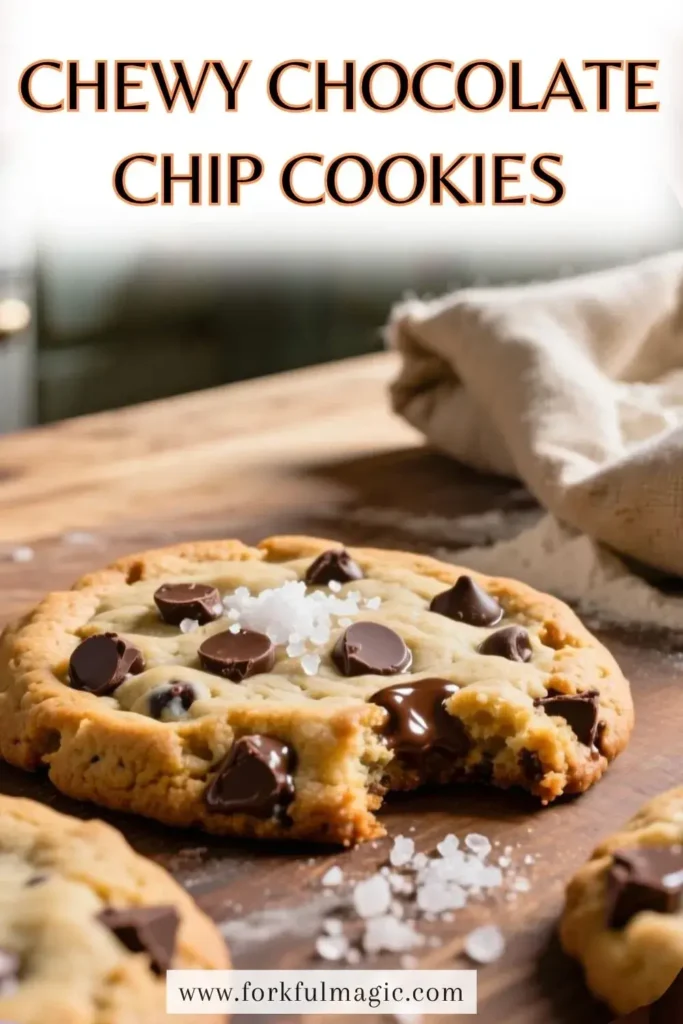
Understanding the science behind baking can elevate your cookies. Here’s why certain methods work:
- Creaming Butter and Sugar: This process incorporates air, leading to a lighter texture. The sugar crystals cut into the butter, creating tiny pockets of air.
- Baking Soda vs. Baking Powder: Baking soda is a base that needs acid to activate. It helps cookies spread and gives them a nice color. If you use baking powder, they’ll puff up more but won’t be as chewy.
- The Role of Sugar: Brown sugar contains moisture, which is key for chewiness. It also caramelizes during baking, contributing to flavor.
Essential Tools
Having the right tools can make a huge difference. A sturdy mixing bowl, a good whisk, and a cookie scoop are essentials. A silicone baking mat can help prevent sticking and ensure even baking.
Serving & Pairing Suggestions
Presentation can take your cookies to the next level. Arrange them on a rustic wooden board or stack them high on a plate. Drizzle with melted chocolate or serve with a scoop of vanilla ice cream for a sundae twist.
Pair these cookies with:
- Milk: A classic choice. The coldness complements the warm cookie.
- Coffee: The bitterness of coffee balances the sweetness.
- Ice Cream: For a cookie sandwich, these cookies are perfect!
Conclusion
Chewy chocolate chip cookies are a timeless treat that brings joy to people of all ages. With the right ingredients and techniques, you can create a batch that’s perfectly chewy, sweet, and utterly irresistible. Remember, the secret lies in the balance of sugars, the temperature of your ingredients, and a few simple techniques.
As you bake, don’t be afraid to experiment. Add different flavors or textures, and make this recipe your own. Happy baking!
FAQs
1. Why are my cookies flat?
Flattening can occur due to too much butter or not enough flour. Make sure to measure accurately.
2. How can I store leftover cookies?
Store them in an airtight container at room temperature for up to a week. For longer storage, freeze them.
3. Can I add nuts to the cookies?
Absolutely! Chopped walnuts or pecans add a nice crunch and flavor.
4. Why do I need to let the dough rest?
Resting the dough allows the flour to hydrate and the flavors to meld, resulting in better texture.
5. Can I use chocolate bars instead of chips?
Yes, chopping a chocolate bar into chunks can give a gourmet touch. It melts beautifully and creates gooey pockets of chocolate.
Now, get ready to bake the best chewy chocolate chip cookies of your life!


